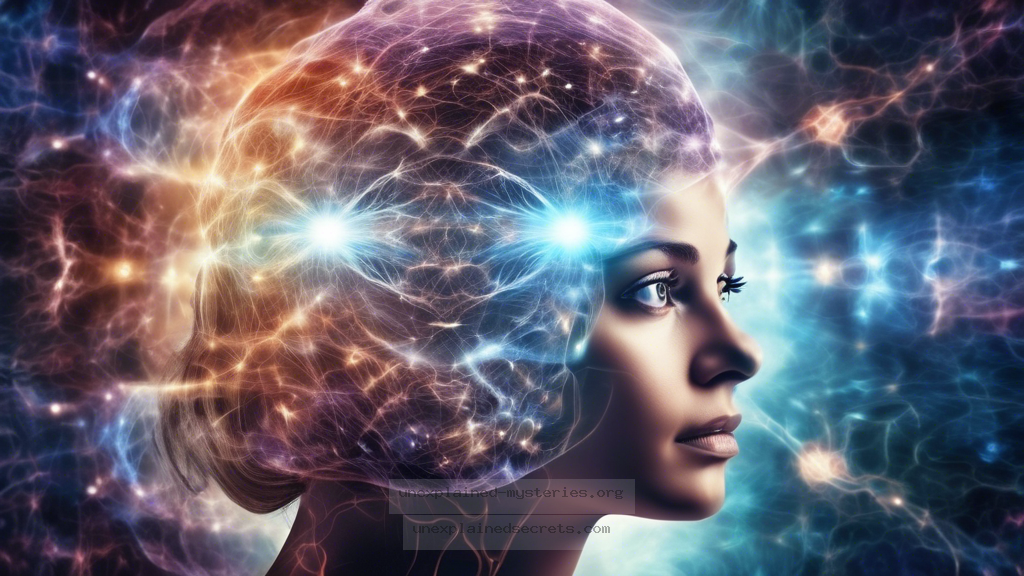Can Telepathy Really Be Proven Through Scientific Research?
Can Telepathy Really Be Proven Through Scientific Research?
The question of whether telepathy exists has fascinated humanity for centuries. With scientific advancements and a growing interest in the unexplained, researchers have sought to establish whether this phenomenon can be validated through empirical evidence. As we delve into the compelling world of telepathy research, we will explore historical contexts, core concepts, practical implications, and the ongoing debate surrounding this enigmatic subject.
Historical Context of Telepathy Research
The roots of telepathy research trace back to the late 19th and early 20th centuries, coinciding with the rise of parapsychology as a scientific discipline. Pioneers like Sigmund Freud and Carl Jung explored the potential of the unconscious mind and its connections with others. However, it was the establishment of the Society for Psychical Research in 1882 that marked the beginning of organized telepathy studies. Researchers conducted experiments to test the transmission of thoughts between individuals, often using card guessing techniques and other methodologies.
One notable experiment was conducted by Joseph B. Rhine at Duke University in the 1930s, where he used Zener cards to study extrasensory perception (ESP), including telepathy. Rhine’s work laid the groundwork for future studies, although skepticism remained prevalent among the scientific community. The challenges of replicating results and the lack of a theoretical basis for telepathy contributed to its classification as a pseudoscience by many.
Core Concepts of Telepathy
Telepathy, often defined as the transfer of thoughts or feelings between individuals without using known human senses, raises several intriguing questions about consciousness and cognition. Theories surrounding telepathy often draw from concepts in quantum physics, neuroscience, and psychology. Some researchers propose that telepathy may involve a collective consciousness—an interconnected web of human thoughts and emotions.
Moreover, the concept of non-locality in quantum mechanics, where particles can affect one another instantaneously without regard to distance, has drawn parallels to telepathic phenomena. This idea suggests that consciousness might operate outside the confines of time and space, allowing for potential communication between minds. However, the lack of a concrete scientific model remains a significant barrier to widespread acceptance.
Practical Evidence and Documented Cases
Over the years, there have been numerous documented cases that proponents of telepathy cite as evidence of its existence. One famous example involves a pair of identical twins, Jim Lewis and Jim Springer, who were separated at birth and reunited at age 39. Their lives exhibited strikingly similar patterns, including the same names for their pets and even similar careers. While this case could be attributed to environmental factors, many believe it points toward an unexplained connection that could be interpreted as a form of telepathy.
Another notable study was conducted by Dr. Dean Radin, a prominent researcher in parapsychology, who performed experiments on telepathic communication using a variety of techniques. In one such experiment, participants were able to accurately guess the content of a randomly selected image shown to another participant, demonstrating a statistical significance that some argue supports the existence of telepathy. However, critics point out that these results can often be attributed to chance or methodological flaws.
Alternative Perspectives on Telepathy
While many researchers advocate for the existence of telepathy, others remain skeptical. Critics argue that the evidence presented is often anecdotal and lacks rigorous scientific validation. They suggest that perceived instances of telepathy can often be explained through psychological factors such as intuition, coincidence, or even the power of suggestion. Furthermore, the replication crisis in psychology has raised concerns about the reliability of many studies claiming to demonstrate telepathic abilities.
Additionally, some neuroscientists posit that the brain’s complex network may allow for subconscious cues and non-verbal communication to occur, which could be misinterpreted as telepathy. These alternative perspectives highlight the necessity for ongoing research and open dialogue in understanding human consciousness and communication.
Common Misconceptions About Telepathy
One prevalent misconception is that telepathy is a straightforward, effortless exchange of thoughts. In reality, if it exists, telepathy may be influenced by various factors, including emotional states and environmental conditions. Another misconception is that telepathy is exclusively a supernatural phenomenon, while many researchers argue that it could be a natural extension of human cognition that we have yet to fully understand.
- Telepathy is easy and common.
- It is purely a supernatural ability.
- All claims of telepathy are hoaxes.
Best Practices for Investigating Telepathy
If you’re interested in exploring telepathy, it’s essential to approach the subject with a critical yet open mind. Here are some best practices for conducting your investigation:
- Documentation: Keep detailed records of your experiences and observations. This will help establish patterns or repeated occurrences that may suggest telepathic communication.
- Controlled Experiments: Try conducting experiments with controlled variables to minimize the influence of chance. This could involve using randomized stimuli and blind testing methods.
- Collaboration: Work with others interested in telepathy research. Collaborative studies can lead to more significant insights and help mitigate biases.
- Stay Informed: Follow recent studies and developments in parapsychology to understand the evolving landscape of telepathy research.
Future Developments in Telepathy Research
As technology advances, the potential for studying telepathy may expand. Researchers are increasingly utilizing brain imaging techniques such as fMRI and EEG to explore the connections between brain activity and telepathic claims. These technologies may help uncover any neurological basis for telepathy, providing further insights into this mysterious phenomenon.
Additionally, the integration of artificial intelligence and machine learning into psychological research may allow for more sophisticated analysis of patterns and correlations related to telepathic experiences. As we continue to explore the depths of human consciousness, the scientific community may one day find a way to validate or debunk the existence of telepathy once and for all.
Conclusion: The Ongoing Quest for Understanding
The question of whether telepathy can be proven through scientific research remains a captivating mystery. While historical accounts, documented cases, and ongoing studies provide a glimpse into this enigmatic phenomenon, skepticism and alternative perspectives continue to challenge the notion of telepathy as a validated concept. As research progresses, it is vital to maintain an open yet critical approach, allowing for the possibility that telepathy could one day be understood as a natural aspect of human cognition.
Whether or not telepathy exists, the exploration of this phenomenon encourages us to delve deeper into the realms of consciousness, connection, and the mysteries of the human mind. The quest for understanding may not yield immediate answers, but it certainly enriches our appreciation for the complexities of human experience.
Other Articles
Recent Posts
- What Happened to Flight MH370? The Conspiracy Theories That Still Haunt Us
- What Secrets Lurk Within the Walls of the Infamous Trans-Allegheny Lunatic Asylum?
- What Evidence Supports the Existence of Bigfoot in the Pacific Northwest?
- What Happened to the Indus Valley Civilization? Unraveling the Mysteries of Ancient Urban Life
- Can Telepathy Be Scientifically Proven Through Laboratory Evidence?







